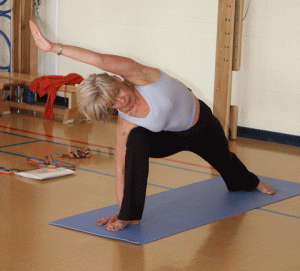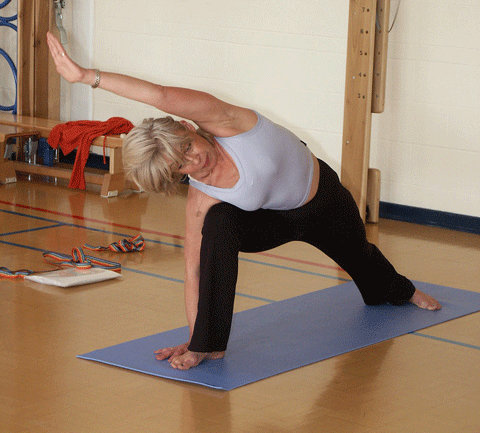There are a number of different types of prolapse, depending on which organ is affected.
Uterine prolapse
When the ligaments supporting the uterus become flaccid and loosen, the uterus bulges downwards. This is a uterine prolapse.
Those who suffer from uterine prolapse often report a sensation of dragging, heaviness or pulling in the pelvis, with a feeling of “sitting on a small ball”. It can also be accompanied by low backache and, in moderate to severe cases, protrusion from the vaginal opening. Uterine prolapse may also cause difficult or painful sexual intercourse.
Bladder prolapse
The supporting ligaments of the bladder become lax, the bladder is not completely emptied causing a reservoir of urine remaining in the bladder. This irritates the bladder, and can lead to bladder spasms, urgency and incontinence. The lowering of the neck of the bladder with prolapse can result in stress incontinence, which involves the leakage of urine into the urethra in response to any sudden pressure, often followed by a contraction of the bladder causing even more leakage. A lax and irritable bladder may also leak during intercourse, due to the pressure exerted upon it.
A cystocele is the prolapse of the bladder into the front wall of the vagina.
Rectal prolapse
A rectal prolapse causes a sensation of bulging into the vagina. There may be an urgency to open the bowels but little emerges as an s-bend effect becomes a reservoir for poop and the reflexes get lost due to this pouch effect. It can lead to chronic constipation and irritable bowel syndrome. The small intestine may also prolapse, bulging into the upper vaginal wall.
When the rectum pushes into the back vaginal wall it is called a rectocele, when it is the small intestine prolapsing into the upper vaginal wall it is known as an enterocele; a combination of the two is a recto-enterocele.

What causes organ prolapse?
Childbirth
-
-
- Difficult vaginal births, particularly those where women are on their backs, legs in stirrups, being coached to push
- Instrumental vaginal births
- Pregnancy hormones can allow tissues to stretch beyond their rebound limits
- Weight of the baby causing undue pressure
- Women who have caesarean sections are also at risk
-
Ageing
-
-
- Loss of hormones at menopause
- Loss of muscle tone associated with ageing
-
Being overweight
-
-
- Can cause a lot of pressure in the abdomen
-
Chronic illness
-
-
- For instance, chronic lung disease, which causes congestion and coughing, creating pressure in the abdomen
-
Lifestyle
-
-
- High impact exercise, such as running on concrete surfaces, gymnastics, trampolining, which cause the ligaments supporting the pelvic organs to lose elasticity and become weak
- High heel shoes, which cause the pelvis to tilt and displace the organs of the pelvis
-
I have a prolapse, what can I do?
- Do not strain during bowel movements. Squatting is the optimum position for a bowel movement. If this is not possibly (and it rarely is with modern toilets) put your feet on a stool to bring the knees up higher. Consider investing in a squatty potty.
- Regularly perform the self-care massage. The uterus is supported by ligaments, which have a fraction of the blood supply of muscle, so they take longer to heal. Doing self-care massage twice a day is very important because every massage will bring fresh blood and nutrients to the tissues to speed healing. With a severe prolapse it is helpful to do the massage on a slant board (about 45o) or a pillow under the hips to tilt the pelvis and uterus.
- It is ideal to have Mizan Therapy one to three times a month for three months. The best results are for women who have stage one and two prolapse. Improvement in stage three prolapse is possible with diligent self-care massage and alignment awareness.
- Use castor oil packs.
- Abdominal binding.
- No lifting over 10 lbs while healing is on-going.
- Nourish the uterine ligaments with Calc Fluor Tissue Salts.
- Use sea sponges soaked in ashwaganda oil with wild orange essential oil added. The best ones are from moontimes.co.uk – the large ones are suitable for prolapse.
- Ashwaganda oil can be used to massage onto the lower abdomen.
- Acupuncture, moxibustion or acupressure can help raise organ qi or treat deficiency.
- No high heels – they are bad for the pelvic floor and compress abdominal organs.
- Manage general health, including alternative modalities and conventional health care when needed. In some cases, especially stage four prolapse, a pessary may be necessary. This is a small plastic or silicone device that is inserted into the vagina and acts as a support.
- Ask for help when needed. Many women with prolapses report that they lack adequate support from their loved ones or co-workers. Remember, people do not know help is needed until you ask for it.

